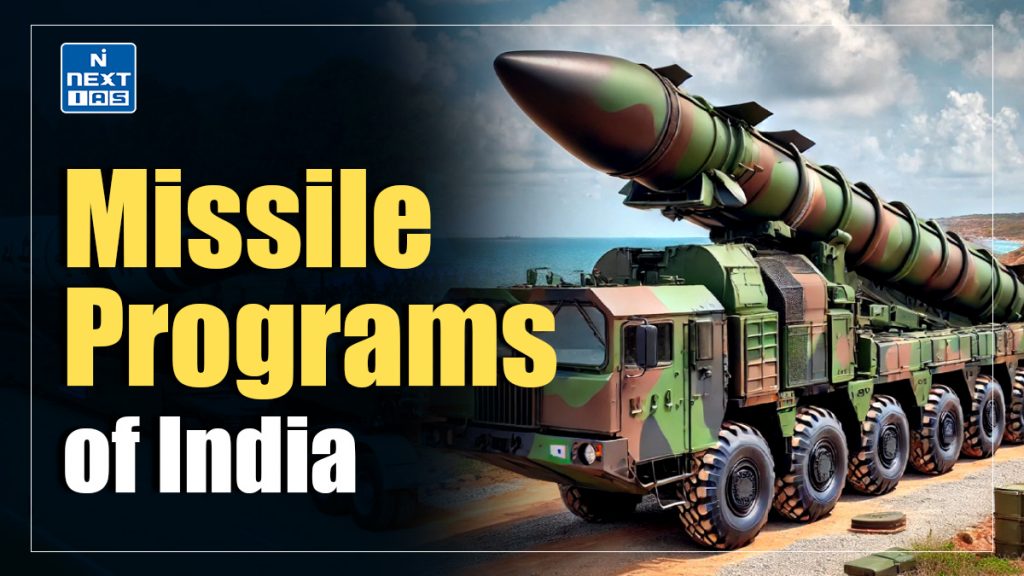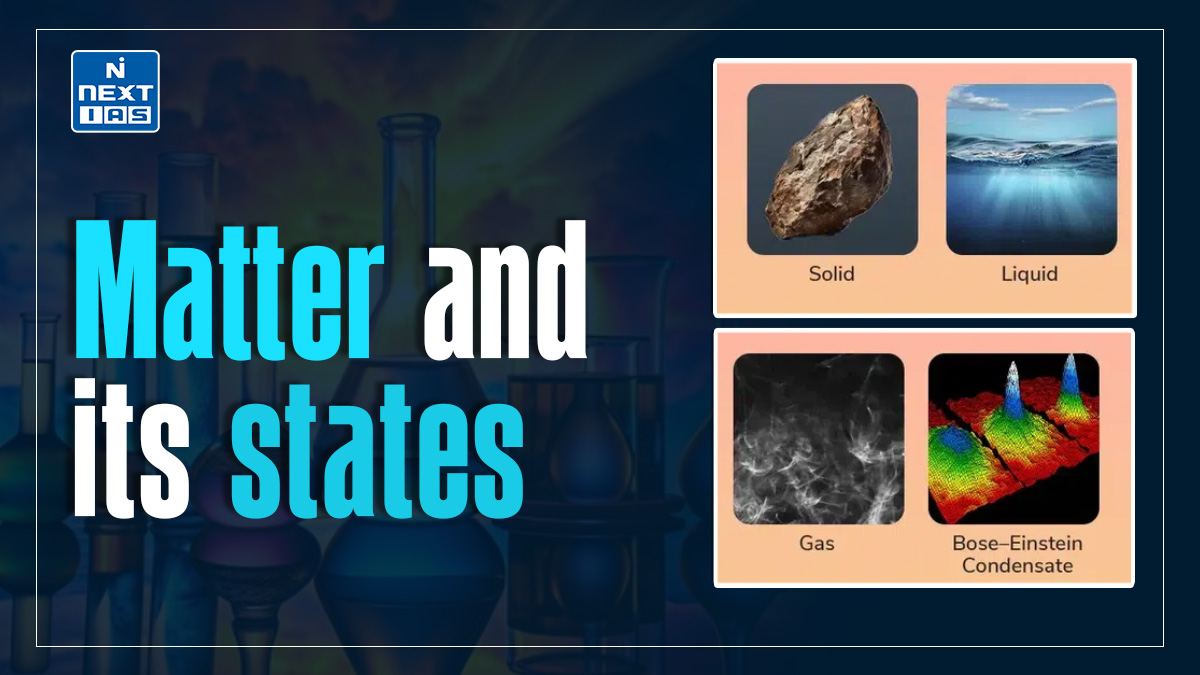
India’s missile programs, spearheaded by the Defence Research and Development Organisation (DRDO), focus on achieving self-reliance in missile technology. Key initiatives include ballistic, cruise, and anti-ballistic missile systems, like Agni, Prithvi, and BrahMos. These programs enhance India’s defense capabilities, strengthen deterrence, and support space exploration and scientific advancements.
About the India’s Missile Programs
- India’s missile programs have evolved significantly since their inception, aiming for self-reliance in defense technology. Developed primarily by the Defence Research and Development Organisation (DRDO), these programs cover a range of missile systems, including ballistic, cruise, and anti-ballistic missiles.
- India’s Integrated Guided Missile Development Program (IGMDP), launched in the 1980s, laid the foundation with iconic missiles like Prithvi (surface-to-surface) and Agni (nuclear-capable ballistic missile).
- Subsequent advancements led to highly sophisticated systems like BrahMos, a supersonic cruise missile jointly developed with Russia, and the Shaurya hypersonic missile.
- The program’s success enhances India’s strategic capabilities and positions it as a significant player in regional and global security dynamics.
- It also reflects India’s commitment to technological innovation in defense.
Features of India’s Missile Programs
India’s missile programs, led by the DRDO, are designed to enhance national security and technological self-reliance. Key features include:
- Varied Range of Missiles: Covers short-, medium-, and long-range missiles for tactical flexibility. The Agni series, for example, includes missiles with ranges from 700 km to over 5,000 km.
- Types of Missiles:
- Ballistic Missiles: Agni and Prithvi series for surface-to-surface strikes.
- Cruise Missiles: BrahMos and Nirbhay for high-speed, low-altitude navigation, enabling precision strikes.
- Anti-Ballistic Missiles (ABMs): Advanced Air Defence (AAD) and Prithvi Air Defence (PAD) systems provide a layered defense against incoming threats.
- Indigenous Development: Built mainly by DRDO, Indian industries, and ISRO, with minimal foreign assistance, focusing on technological self-reliance and domestic expertise.
- Nuclear Capable: Several missiles, such as Agni and Prithvi, are capable of delivering nuclear payloads, enhancing strategic deterrence.
- Flexible Launch Platforms: Designed for launch from various platforms, including land, air, sea, and submarines, offering tactical versatility.
- Stealth and Precision: Use of advanced guidance and propulsion technologies enables precision targeting and minimizes detection by radar systems.
- Future Programs: Includes initiatives like hypersonic missiles and improved space defense systems, aimed at keeping pace with global defense advancements.
- India’s missile programs reflect its commitment to safeguarding national interests, bolstering defense capabilities, and pursuing technological independence.
Significance of India’s Missile Programs
India’s missile programs hold significant strategic, technological, and economic importance:
- National Security: Missile programs provide India with credible deterrence, particularly in a region with nuclear-armed neighbors, enhancing national defense and sovereignty.
- Technological Advancement: Developing advanced missile systems promotes innovation in critical areas like propulsion, guidance, and materials, fostering domestic technological expertise.
- Self-Reliance: These programs reduce dependency on foreign defense suppliers, aligning with India’s goal of “Atmanirbhar Bharat” (self-reliant India).
- Regional Stability: A strong missile capability ensures balance in South Asia, deterring aggression while promoting regional stability.
- International Standing: Success in indigenous missile development positions India as a significant global defense and space player, strengthening its strategic partnerships.
- Economic Impact: Indigenous development generates jobs, supports local industries, and has positive spillover effects in sectors like space, telecommunications, and electronics.
Types of Missiles in India
India’s missile arsenal is diverse, designed to meet various strategic needs. Major types include:
- Ballistic Missiles:
- Agni Series: Ranges from short to intercontinental (700–5,000+ km), primarily nuclear-capable.
- Prithvi Series: Short-range (150–350 km), used for tactical, surface-to-surface strikes.
- K Series: Submarine-launched ballistic missiles (SLBM), enhancing second-strike capability.
- Cruise Missiles:
- BrahMos: Supersonic cruise missile, versatile for land, sea, and air platforms; known for speed and precision.
- Nirbhay: Subsonic, long-range (1,000 km), with terrain-hugging capability to avoid radar.
- Anti-Ballistic Missiles (ABM):
- Prithvi Air Defence (PAD): Designed to intercept high-altitude ballistic missiles.
- Advanced Air Defence (AAD): Meant for lower-altitude intercepts, forming a two-tier defense shield.
- Surface-to-Air Missiles (SAM):
- Akash: Medium-range (up to 30 km), designed to target aerial threats.
- Barak-8: Jointly developed with Israel; capable of intercepting various aerial threats, including aircraft and missiles.
- Anti-Tank Guided Missiles (ATGM):
- Nag: Designed to destroy armored targets, with variants like helicopter-launched (HELINA).
- MPATGM: Man-portable, short-range missile, providing flexibility for infantry use.
- Tactical Missiles:
- Shaurya: Hypersonic, nuclear-capable missile, designed for high-speed, low radar signature.
- Prahaar: Quick-reaction, short-range missile system for battlefield support.
These missiles enhance India’s strategic defense across land, air, sea, and undersea domains, ensuring robust, multi-tiered deterrence and protection.
Way Forward
To further strengthen India’s missile capabilities, several key steps can guide the way forward:
- Enhance Indigenous Research and Development: Fostering advanced R&D in propulsion, guidance systems, and composite materials is crucial to keep pace with technological advancements. Expanding partnerships between DRDO, academia, and private industry can accelerate innovation.
- Focus on Hypersonic Technology: Investing in hypersonic missile research will enable India to develop ultra-fast, highly maneuverable missiles that are challenging to detect and intercept, positioning India among the few nations with cutting-edge offensive capabilities.
- Strengthen Anti-Ballistic Missile (ABM) Systems: Expanding and refining multi-layered ABM systems will enhance defense against potential missile threats. Integration of more sophisticated tracking and intercept technologies will strengthen India’s defense shield.
- Boost Submarine-Launched Capabilities: Developing more advanced and long-range submarine-launched ballistic missiles (SLBMs) will enhance second-strike capability, ensuring deterrence even in the event of a first-strike scenario.
- Integrate AI and Cybersecurity: Employing artificial intelligence for real-time decision-making in missile guidance and tracking, and ensuring cybersecurity to protect missile systems from potential hacking, is crucial for maintaining operational readiness and reliability.
- Expand International Collaborations: Strategic partnerships, like with Israel for surface-to-air missiles and Russia for BrahMos, should be deepened to co-develop next-generation missile technologies. Engaging with countries possessing advanced missile expertise can boost India’s own development trajectory.
- Strengthen Testing and Deployment Infrastructure: Expanding testing facilities and rapid deployment infrastructure is essential to support a faster development cycle and operational readiness.
- Align with International Norms: Ensuring that missile development aligns with global non-proliferation norms, while maintaining India’s strategic autonomy, will improve international standing and avoid potential restrictions.
These efforts will enhance India’s missile capabilities, supporting long-term security, technological leadership, and a self-reliant defense ecosystem.
Conclusion
India’s missile programs strengthen its defense, ensure strategic autonomy, and support peace through credible deterrence. By advancing indigenous missile technology, India achieves self-reliance, bolsters regional stability, and enhances global standing. These programs remain vital for safeguarding national interests and promoting technological progress in defense and related sectors.
GS - 3




